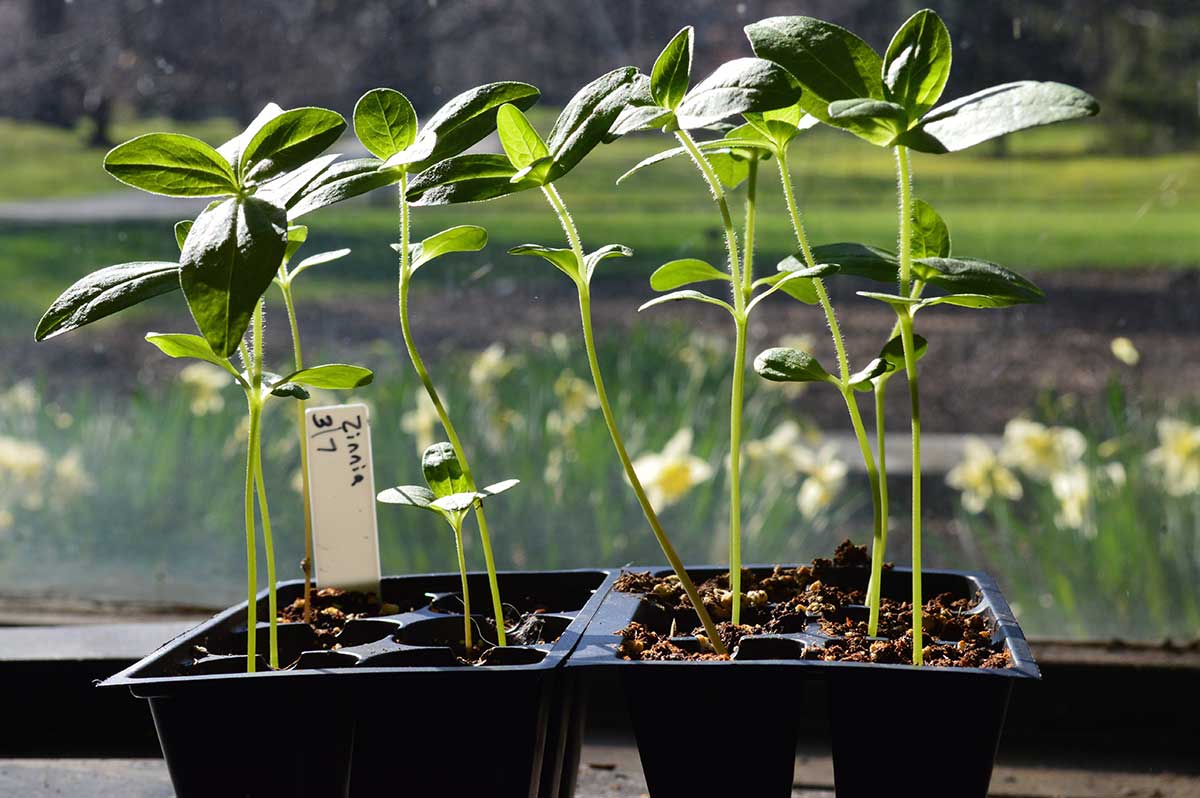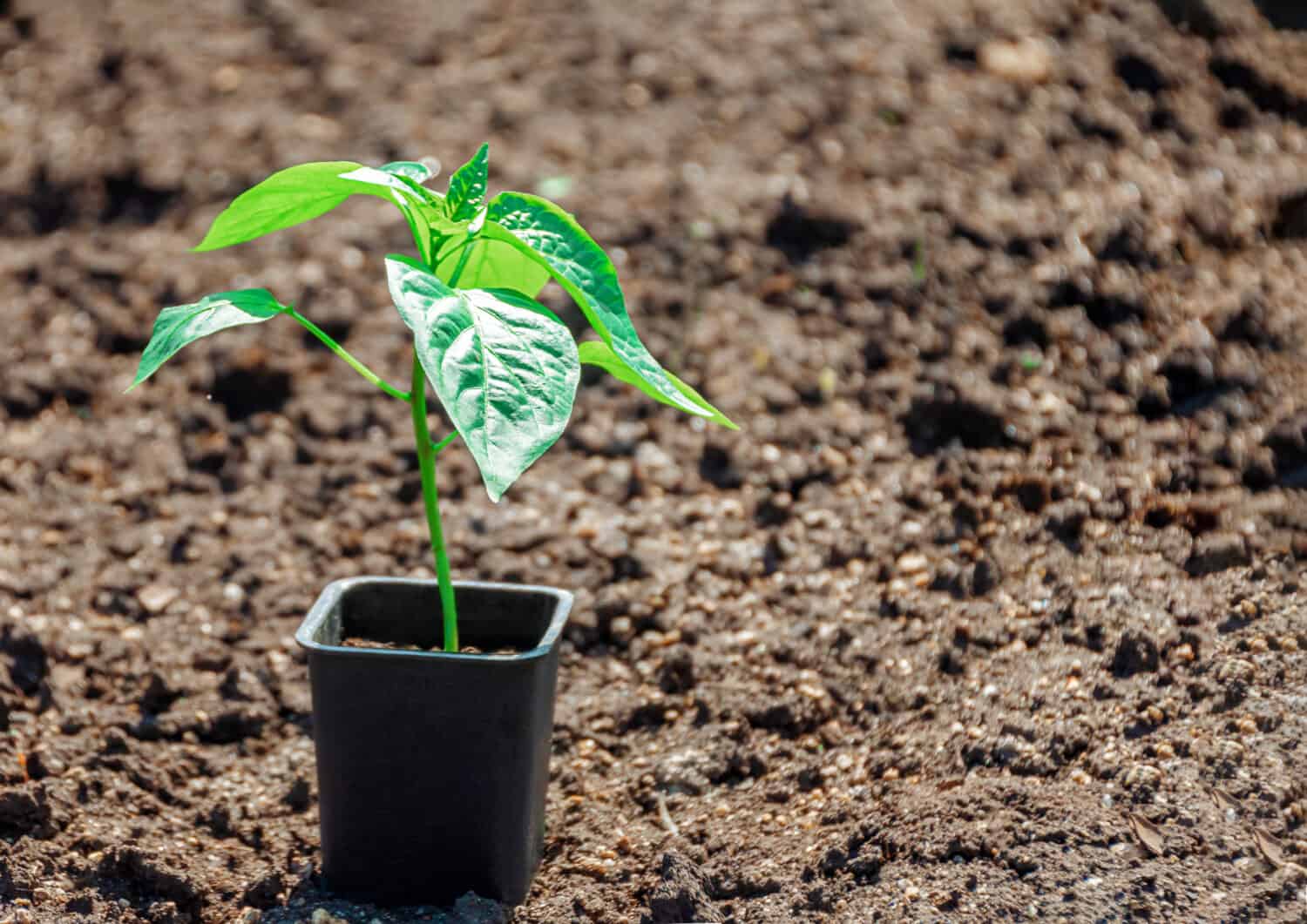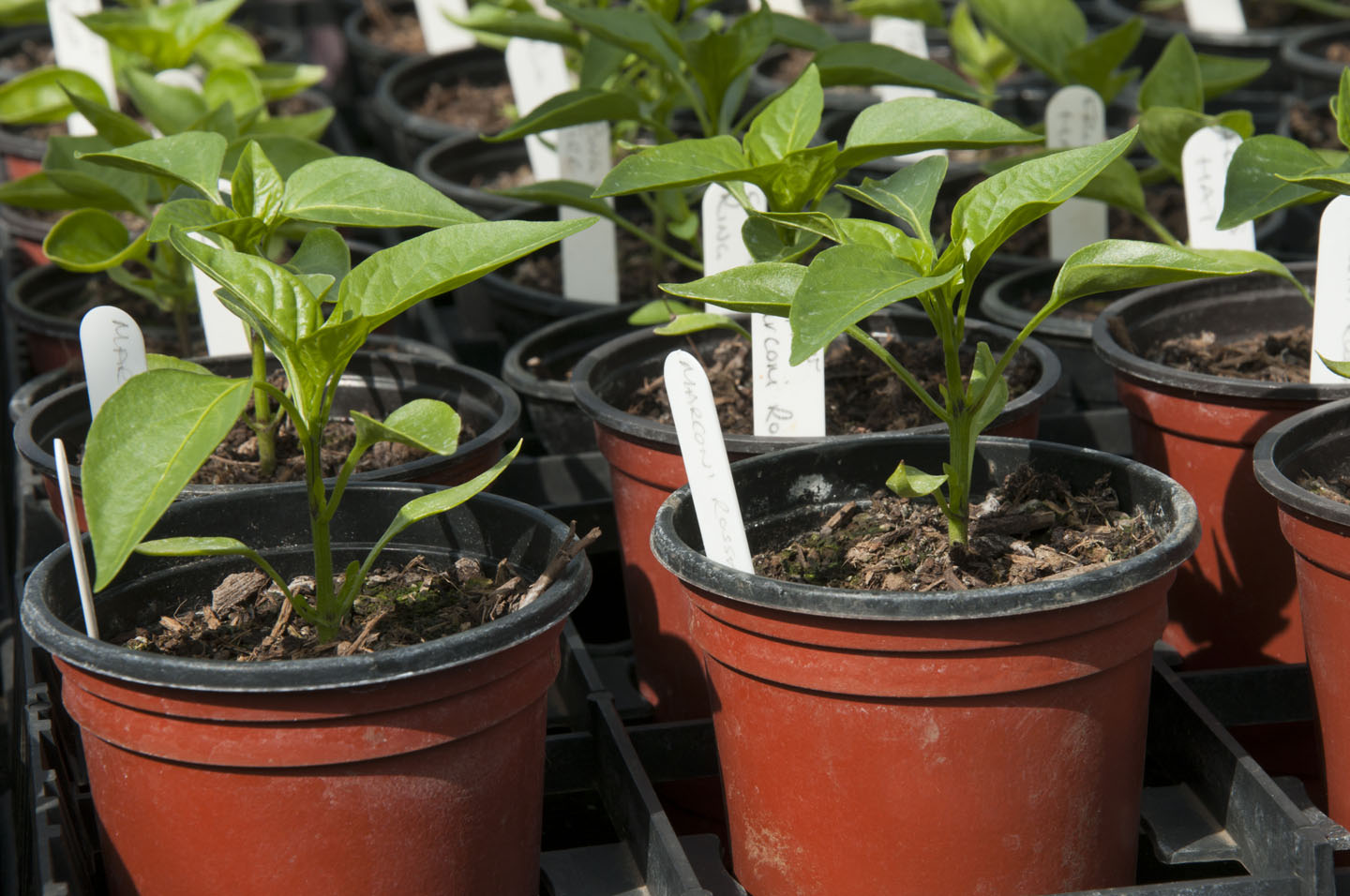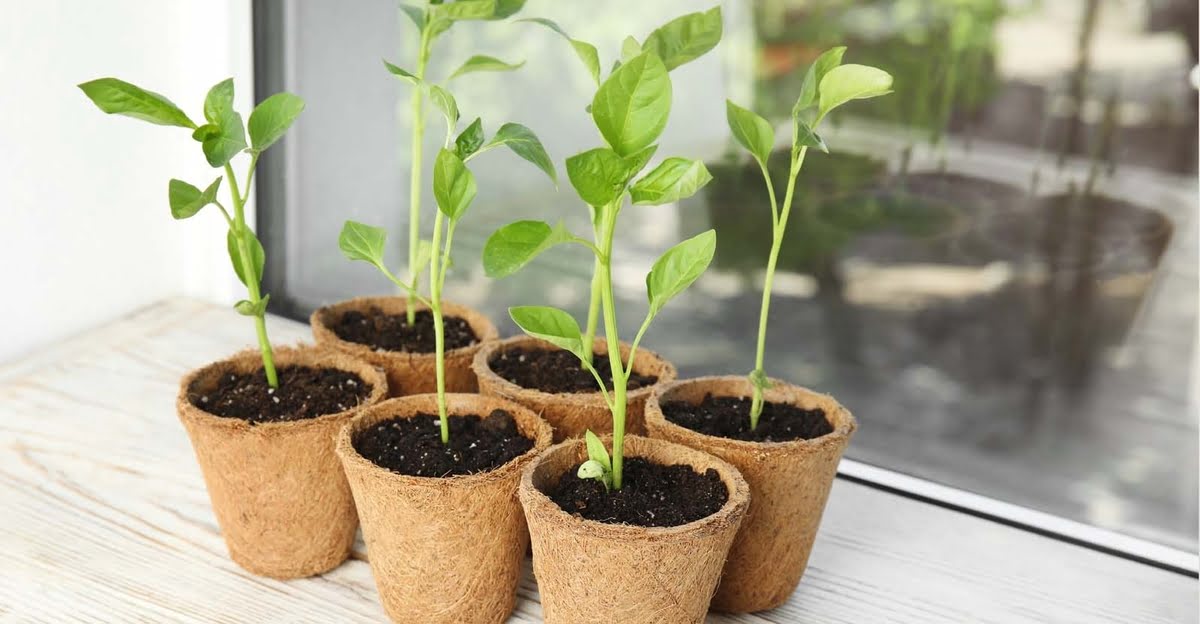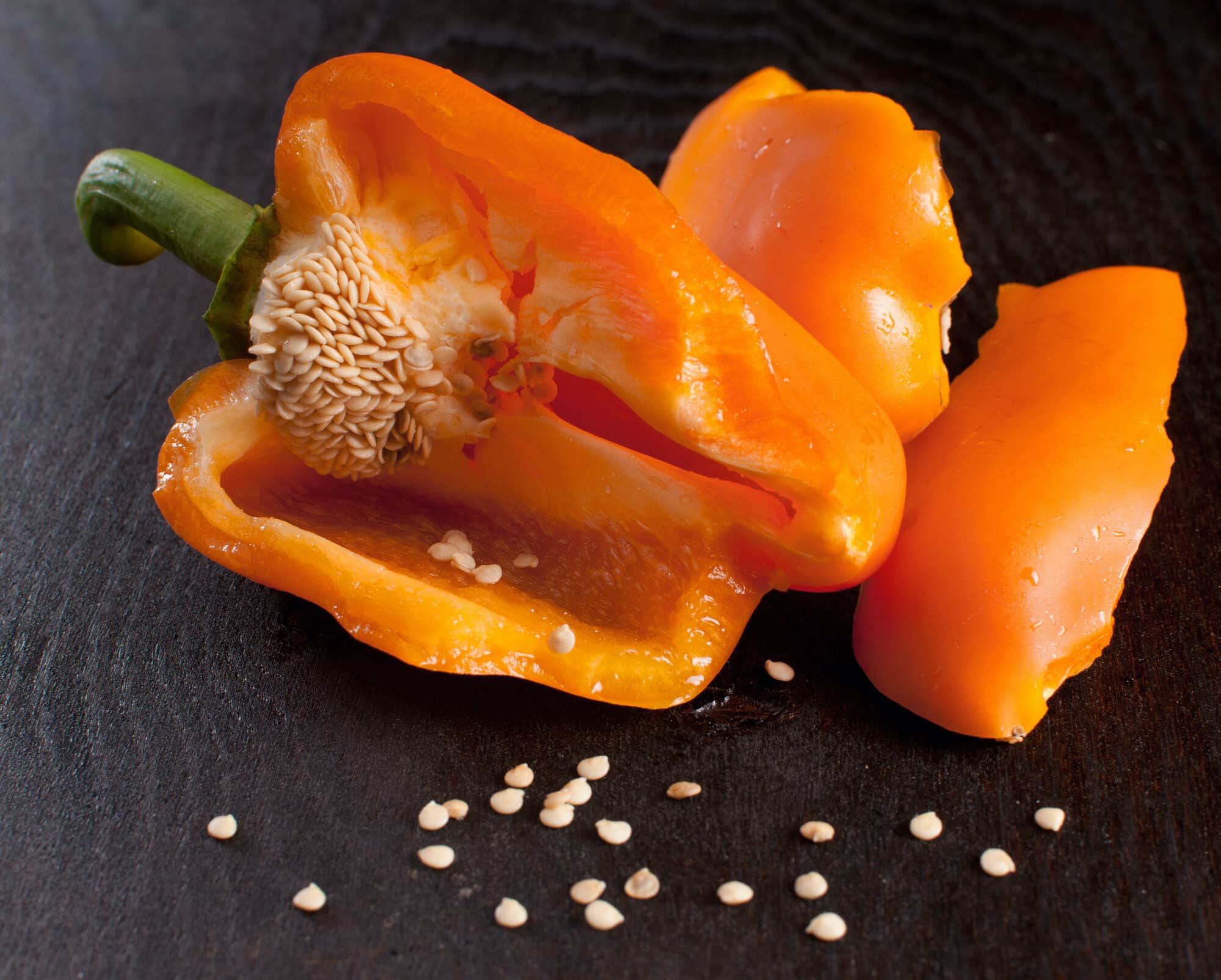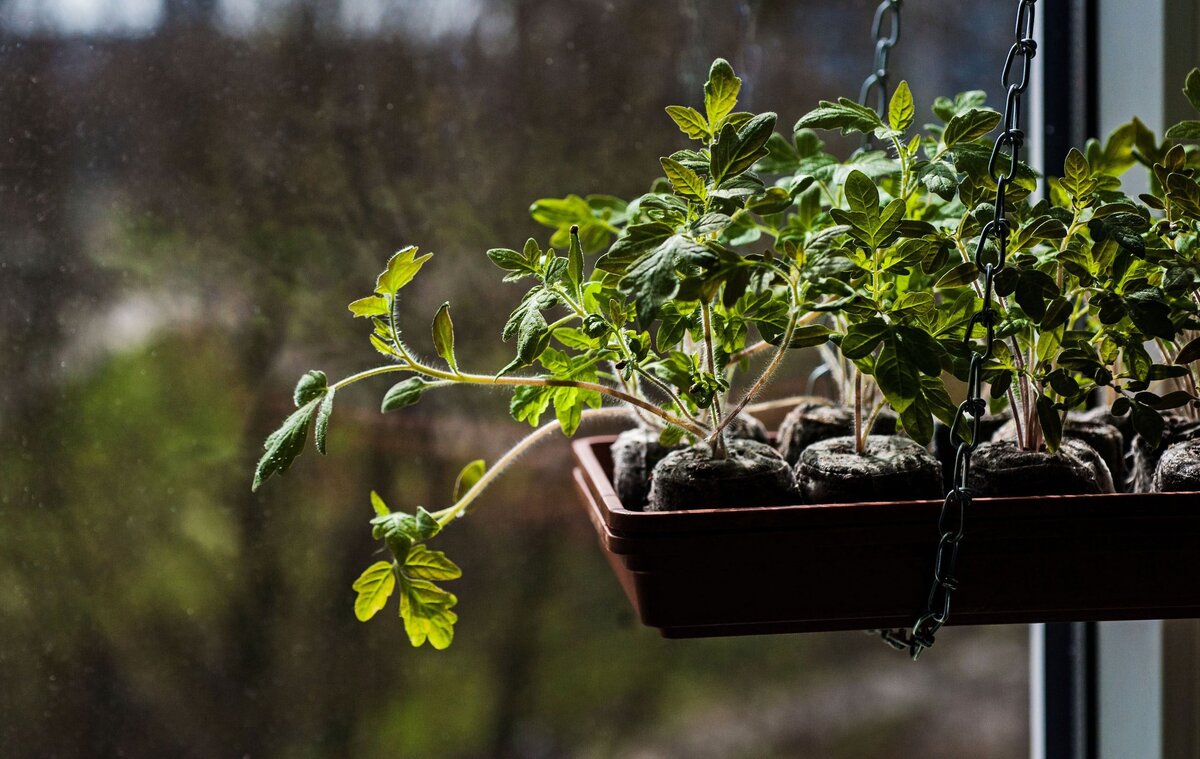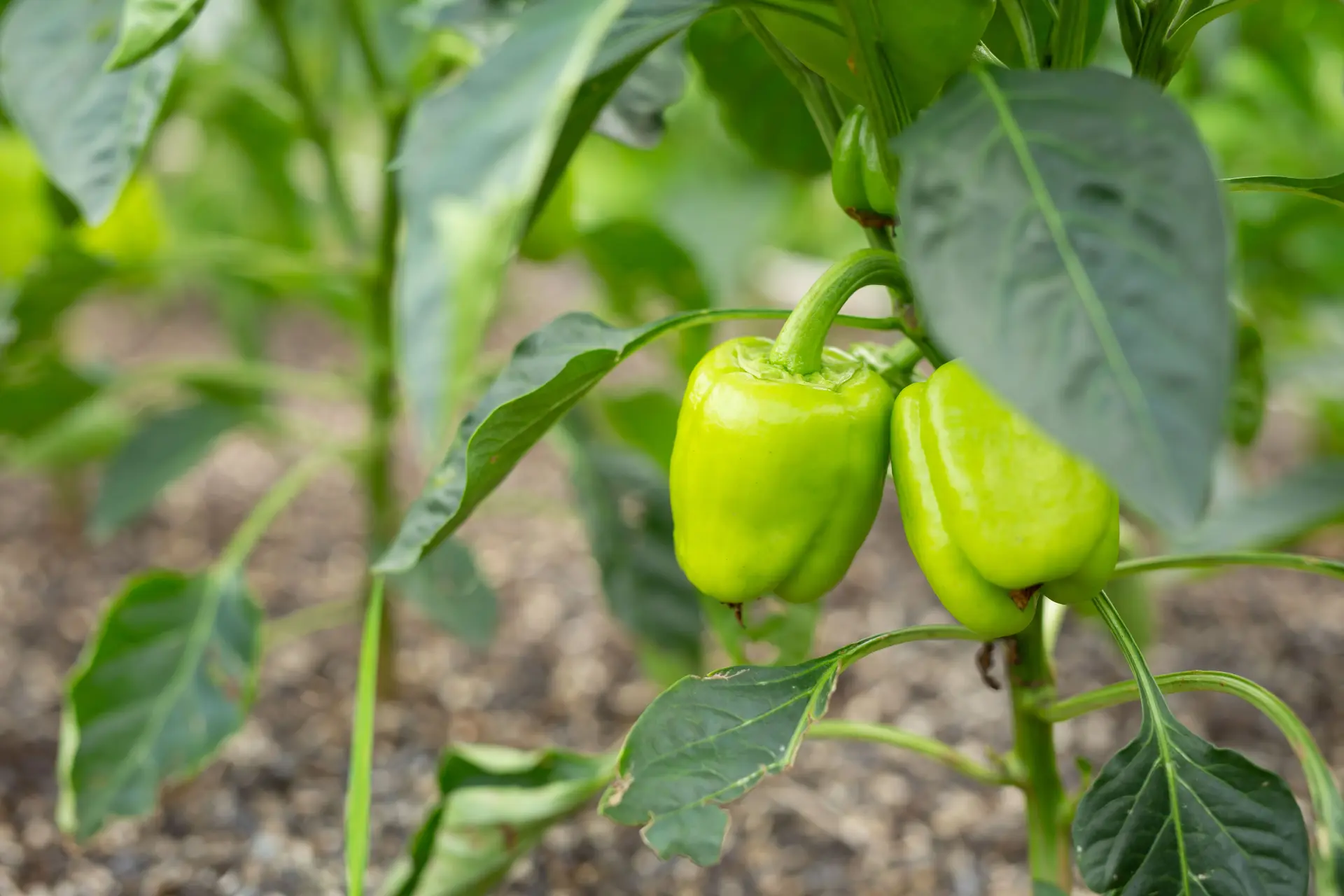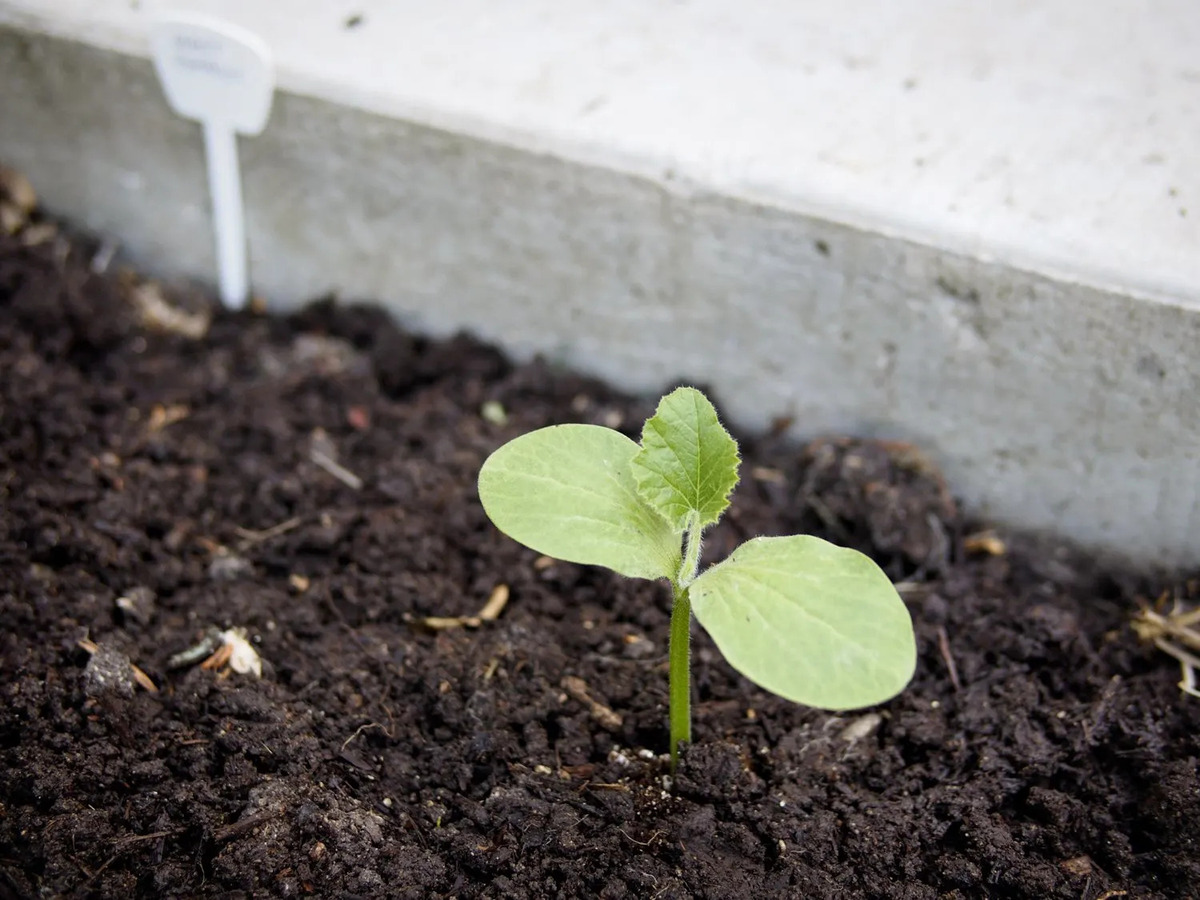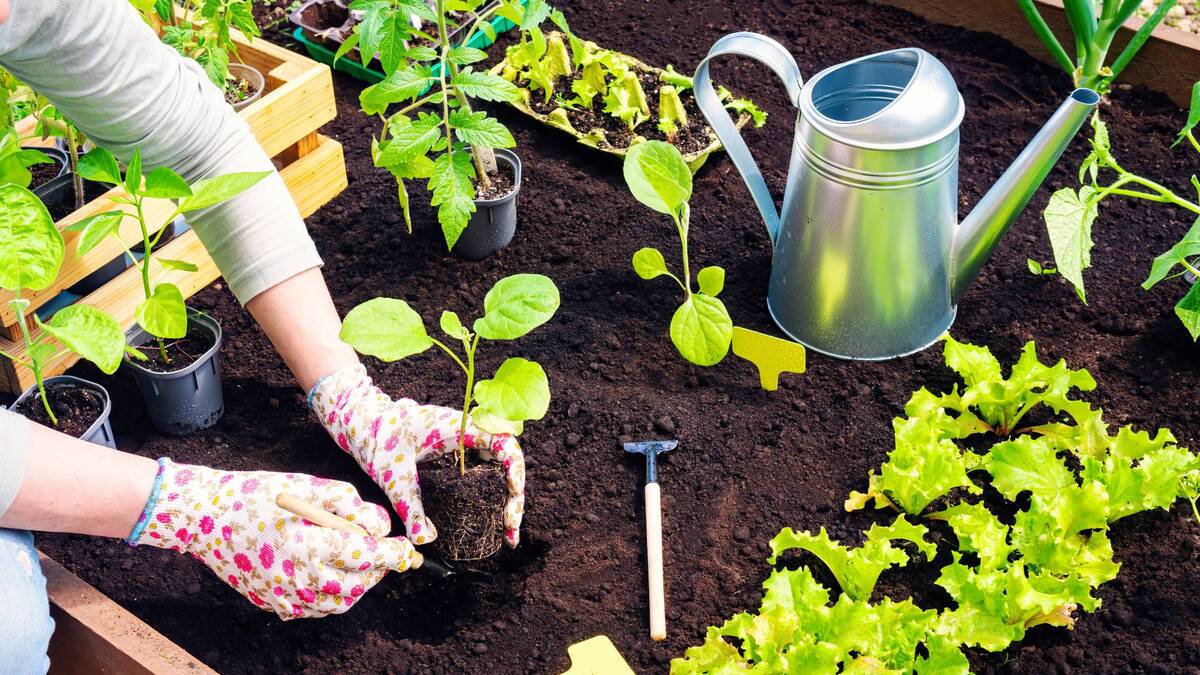Home>Types of Gardening>Edible Gardening>When To Plant Pepper Seedlings
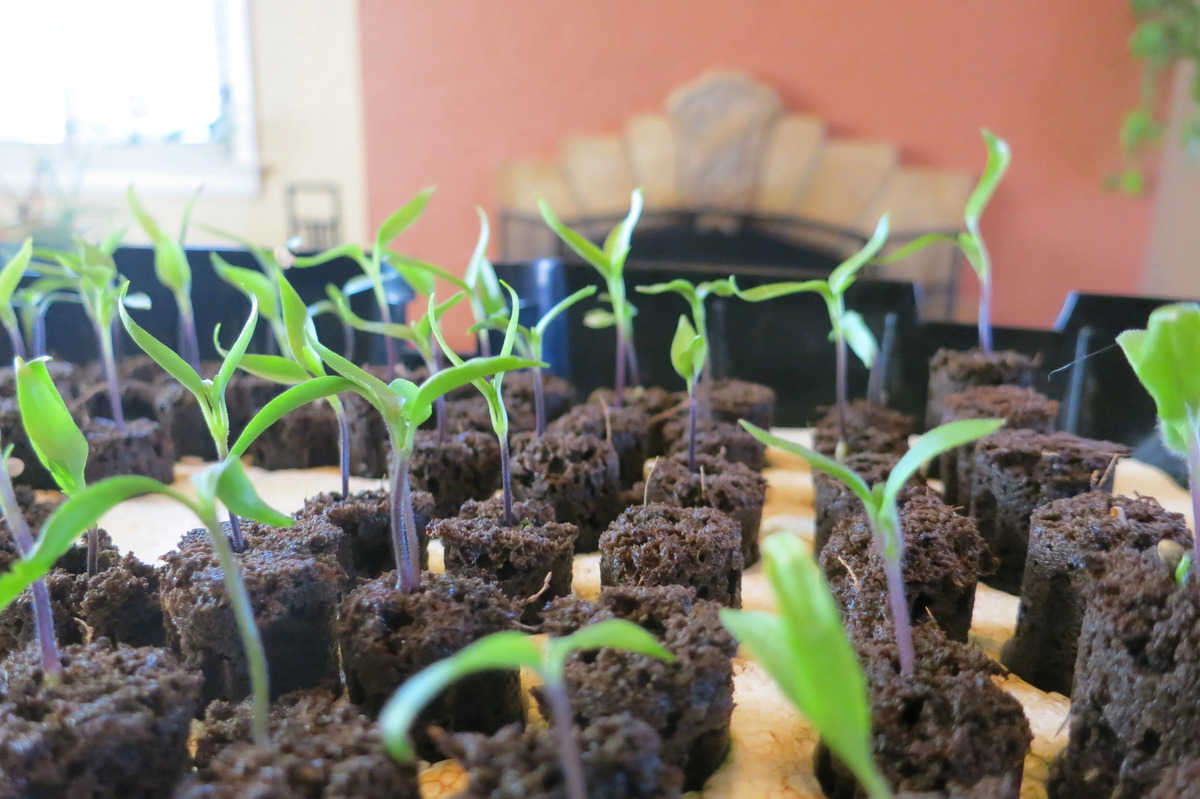

Edible Gardening
When To Plant Pepper Seedlings
Modified: January 22, 2024
Discover the perfect timing for planting pepper seedlings in your edible gardening journey. Learn expert tips and tricks for successful growth and bountiful harvests.
(Many of the links in this article redirect to a specific reviewed product. Your purchase of these products through affiliate links helps to generate commission for Chicagolandgardening.com, at no extra cost. Learn more)
Table of Contents
Introduction
Welcome to the wonderful world of edible gardening! Growing your own food is a rewarding and satisfying experience, and one of the most popular choices for many gardeners is planting pepper seedlings. Whether you’re a seasoned gardener or just starting out, peppers are a versatile and delicious addition to any home garden.
Peppers come in a variety of shapes, sizes, and heat levels, offering a wide range of culinary possibilities. From the mild and sweet bell peppers to the fiery habaneros, there is a pepper variety to suit every taste bud. Not only do peppers add flavor and vibrancy to dishes, but they are also packed with essential nutrients and antioxidants, making them a healthy choice for your homegrown produce.
When it comes to planting pepper seedlings, there are a few factors to consider to ensure successful growth. Factors such as timing, soil preparation, and proper care after transplanting can significantly affect the health and productivity of your pepper plants. By understanding these factors and following a few guidelines, you can set yourself up for a bountiful pepper harvest.
In this article, we will explore the optimal timing for planting pepper seedlings, how to prepare the soil for their growth, and the necessary steps for transplanting and caring for your pepper seedlings. By the end, you will have the knowledge you need to nurture your very own pepper garden and enjoy the satisfaction of growing your own flavorful peppers.
Factors to Consider for Planting Pepper Seedlings
Before diving into the process of planting pepper seedlings, it’s essential to consider a few factors to ensure their successful growth. Taking these factors into account will help you create the optimal conditions for your pepper plants and maximize their productivity.
1. Temperature: Peppers thrive in warm temperatures typically ranging from 70 to 85 degrees Fahrenheit (21 to 29 degrees Celsius). It’s important to wait until the soil has warmed up before planting your seedlings, as cold soil can stunt their growth or even cause them to die. You can use a soil thermometer to determine if the soil temperature is ideal for planting.
2. Sunlight: Pepper plants require at least 6 to 8 hours of direct sunlight each day. Choose a location in your garden that receives ample sunlight to ensure proper growth and fruit production. If you have limited space or live in an area with less sunlight, consider using containers that can be moved to sunnier spots.
3. Soil fertility: Peppers thrive in well-drained, nutrient-rich soil. Ensure that your soil is fertile by adding organic matter, such as compost or well-rotted manure, to improve its structure and nutrient content. A pH level between 6.0 and 6.8 is ideal for growing peppers, so you might need to amend your soil if it’s too acidic or alkaline.
4. Watering: Pepper plants require consistent moisture, especially during hot and dry periods. Proper watering is crucial to prevent issues like blossom end rot. Water the plants deeply once or twice a week, allowing the soil to dry slightly between watering sessions. Avoid overwatering, as it can lead to diseases and root rot.
5. Spacing: Pepper plants need adequate space to grow and receive proper air circulation. Give each plant enough room to grow by spacing them 18 to 24 inches apart in rows. This spacing will prevent overcrowding and reduce the risk of disease spread.
By considering these factors, you can create an ideal environment for your pepper seedlings to thrive. Taking the time to plan and prepare will greatly increase the chances of a successful pepper harvest.
Timing for Planting Pepper Seedlings
Timing is crucial when it comes to planting pepper seedlings. Peppers are warm-season crops that require a longer growing season, so it’s important to plant them at the right time to ensure optimal growth and fruit production.
In most regions, pepper seedlings should be started indoors 8 to 10 weeks before the last expected frost date. This allows the seedlings to develop strong root systems and become sturdy enough to transplant outdoors. You can find the average last frost date for your area from local gardening resources or consult with experienced gardeners in your region.
If you’re using store-bought seedlings, check the packaging or consult the nursery for the recommended planting time. They are usually started at the right time for your region, so you can transplant them directly into your garden when the weather is suitable.
The soil temperature is another important factor to consider when timing the transplanting of pepper seedlings. The soil should be at least 60 degrees Fahrenheit (15 degrees Celsius) for successful growth. Planting in soil that is too cold can result in stunted growth or even the death of the seedlings.
It’s important to note that pepper plants are sensitive to cold temperatures, especially in the early stages of growth. If the weather forecast predicts a late spring frost, it’s advisable to protect your seedlings with row covers or cloths. These protective covers can provide insulation and shield the young plants from frost damage.
By planting your pepper seedlings at the right time, considering both the indoor starting date and the soil temperature, you can give them the best chance to thrive and produce an abundant harvest. Take the time to plan and prepare, and you’ll be rewarded with healthy and productive pepper plants.
Preparing Soil for Planting Pepper Seedlings
Preparing the soil is a crucial step in ensuring the successful growth of your pepper seedlings. By providing the right conditions for their roots to establish and access essential nutrients, you can set your plants up for a healthy and productive growing season.
Here are a few steps to prepare the soil for planting pepper seedlings:
- Clear the area: Start by removing any weeds, rocks, or debris from the planting area. This will allow your pepper seedlings to grow without any competition for nutrients and moisture.
- Loosen the soil: Use a garden fork or a tiller to loosen the soil to a depth of about 10 to 12 inches. This will improve the soil’s structure and enable the roots to penetrate easily and access nutrients.
- Add organic matter: Incorporate organic matter into the soil, such as compost or well-rotted manure. This will enrich the soil with valuable nutrients, improve its drainage, and enhance its ability to hold moisture.
- Test the soil: It’s advisable to conduct a soil test to determine the pH level and nutrient content of your soil. This information will help you make any necessary adjustments to bring the soil to the optimum conditions for pepper growth.
- Amend the soil: Based on the soil test results, you may need to amend your soil by adding lime to raise the pH or sulfur to lower it. Additionally, you might need to add specific nutrients, such as nitrogen, phosphorus, or potassium, to meet the requirements of peppers.
- Work the amendments into the soil: Once you have added any necessary amendments, use a garden rake or hoe to mix them thoroughly into the soil. This will ensure even distribution and help the roots access the added nutrients.
- Smooth and level the soil: Finally, smooth and level the soil surface with a rake, removing any large clumps or debris. This will provide a suitable planting bed for your pepper seedlings.
By taking the time to properly prepare the soil, you are giving your pepper seedlings an optimal environment for root development and nutrient uptake. This will lead to healthier plants, better fruit production, and ultimately, a more successful and enjoyable pepper gardening experience.
Transplanting Pepper Seedlings
Transplanting pepper seedlings from indoor pots to the garden is a critical step in their growth journey. This process must be done with care to minimize transplant shock and ensure the seedlings thrive in their new environment. Here’s a step-by-step guide to successfully transplanting your pepper seedlings:
- Choose the right time: Wait until all danger of frost has passed and the soil temperature has reached at least 60 degrees Fahrenheit (15 degrees Celsius) before transplanting your pepper seedlings. This will give them the best chance of survival and growth.
- Prepare the planting holes: Dig holes in your garden bed that are slightly larger than the root balls of your seedlings. Space the holes 18 to 24 inches apart, allowing sufficient room for the plants’ future growth.
- Water the seedlings: Before transplanting, thoroughly water the seedlings in their pots. This will ensure their roots are well-hydrated and make it easier to remove them from the containers without damaging the delicate roots.
- Gently remove the seedlings from pots: Carefully remove each seedling from its pot, taking care not to disturb the roots too much. You can gently tap the bottom of the pot or use a tool, such as a small trowel, to loosen the root ball if necessary.
- Place seedlings in the planting holes: Lower each seedling into the prepared planting hole, making sure the plant is at the same depth it was in the pot. The top of the root ball should be level or slightly above the soil surface to prevent it from being buried too deep.
- Backfill the holes: Fill the holes with soil, gently pressing it around the seedlings to secure them in place. Avoid compacting the soil too much, as this can hinder root development and drainage.
- Water the transplanted seedlings: After transplanting, give the seedlings a thorough watering to help settle the soil and eliminate air pockets around the roots. This will also provide essential moisture for their initial adjustment period.
- Protect the seedlings: If the weather is still cool or if there is a chance of frost, consider using protective covers like cloths or row covers to shield the seedlings from harsh conditions.
Transplanting pepper seedlings can be a delicate process, but with proper care and attention, you can help them establish themselves in the garden and continue their growth toward maturity. Remember to monitor their progress closely in the days following transplanting and provide regular care to promote their health and development.
Caring for Pepper Seedlings After Transplanting
After transplanting your pepper seedlings into the garden, it’s crucial to provide proper care to ensure their healthy growth and productivity. Here are some essential steps to follow when caring for your pepper seedlings:
- Watering: After transplanting, water your pepper seedlings deeply to ensure they receive enough moisture. Provide a thorough watering at least once a week, or more during hot and dry periods. Be mindful not to overwater, as this can lead to root rot and other issues. It’s best to water at the base of the plants and avoid wetting the foliage.
- Mulching: Apply a layer of organic mulch around the base of the pepper plants, such as straw, wood chips, or compost. Mulching helps to retain moisture, suppress weed growth, and regulate soil temperature. Be sure to leave a small gap around the stem to prevent the risk of rot and disease.
- Staking and support: Depending on the variety and size of your pepper plants, they may require support to keep them upright as they grow and bear fruit. Use stakes, cages, or trellises to provide support and prevent the plants from bending or breaking under the weight of the peppers.
- Fertilizing: Pepper plants benefit from regular feeding to promote healthy growth and abundant fruit production. Apply a balanced organic fertilizer, following the manufacturer’s instructions, once or twice during the growing season. Alternatively, you can use compost or other organic amendments to enrich the soil with nutrients.
- Pest and disease management: Keep a close eye on your pepper plants for any signs of pests or diseases, such as aphids, caterpillars, or fungal infections. Take preventive measures like regularly inspecting the plants, removing any affected leaves or pests, and using organic pest control methods if necessary.
- Pruning: Prune your pepper plants as needed to maintain their shape, improve air circulation, and redirect energy towards fruit production. Remove any damaged or diseased branches, as well as any suckers that may emerge from the leaf axils.
- Harvesting: As your pepper plants mature, monitor the fruits for ripeness. Harvest peppers when they have reached the desired size and color. Use sharp pruners or a knife to carefully cut the peppers from the plants, taking care not to damage the stems or other fruits.
- Crop rotation: To prevent the buildup of diseases and pests, practice crop rotation by not planting peppers in the same spot every year. Rotate them with other vegetable crops in different areas of your garden.
By following these care guidelines, you’ll provide the necessary attention and support for your pepper seedlings as they grow into mature plants. With proper care, your pepper plants will reward you with healthy foliage, robust fruit production, and plenty of delicious peppers to enjoy in your meals.
Conclusion
Congratulations on learning the ins and outs of planting and caring for pepper seedlings! By considering factors like timing, soil preparation, transplanting techniques, and post-transplant care, you have set yourself up for success in growing your own vibrant and flavorful peppers.
Remember to choose the right time to plant your seedlings, based on local frost dates and soil temperature. Prepare the soil adequately by clearing the area, incorporating organic matter, and making any necessary amendments to optimize its fertility. When transplanting the seedlings, handle them with care, ensuring proper placement and watering them generously to aid their adjustment to the garden environment.
Proper care after transplanting is crucial for the ongoing health and productivity of your pepper plants. Maintain a consistent watering schedule, mulch around the plants, and provide support if necessary. Regularly feeding your plants with organic fertilizers or compost will promote vigorous growth and abundant fruit production. Keep an eye out for pests and diseases, and take appropriate measures to prevent or manage them as needed.
As your pepper plants mature, be sure to harvest the fruits at their peak ripeness and enjoy the bountiful flavors they offer. Remember to practice crop rotation to prevent the buildup of pests and diseases in your garden and ensure future success in your edible gardening endeavors.
With the knowledge and tips provided in this article, you are well-equipped to embark on your edible gardening journey and cultivate a thriving pepper garden. Get your hands dirty, embrace the joy of watching your plants grow, and savor the satisfaction of enjoying homegrown, delicious peppers.
